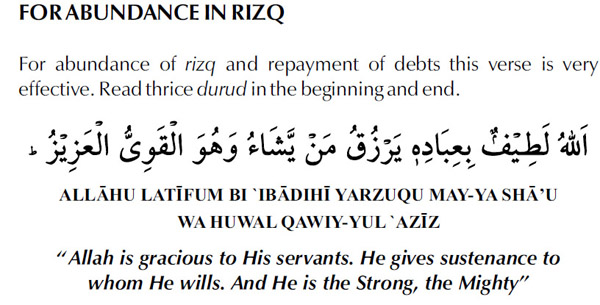Directions for questions 31 to 34: The passage given below is followed by a set of questions. Choose the
most appropriate answer to each question.
There is something irksome about a recent story in the New York Times that declared that "E-Books Make
Readers Feel Less Isolated". Being a bookworm is uncool, the story alleges, but carrying around an ereader
makes reading seem chic.
"Strangers constantly ask about it," Michael Hughes, a communications associate at Johns Hopkins
Bloomberg School of Public Health in Baltimore, said of his iPad, which he uses to read a mix of novels
and nonfiction. "It's almost like having a new baby."
The problem here is not with the e-book. I'm in favour of any mode of literature delivery. If the only way I
could consume Tolstoy was by having a trail of ants marching across my desk, each hoisting a piece of
rice inscribed with the relevant word, that would be grand. Also, amazing. Also, impractical. Rather, I'm
intrigued by the notion that e-readers make reading less antisocial. Doesn't reading necessitate not
socialising? Indeed, isn't that part of the appeal?
I was always under the impression that books served a dual purpose: not only do they offer a world to enter,
but also they offer an affordable means of escape from the world we're in. What a nice cloak a book can be
on the subway or the train, or while sitting at a bar, enjoying the buzz of humanity while absorbed in
something else. I'm reminded of Anne Tyler's "The Accidental Tourist", in which books are recommended
as props for travellers who would rather avoid idle chatter with strangers.
Jonathan Franzen had something powerful to say about this in Lev Grossman's cover story about him in
Time. Though few would hold Mr Franzen up as a beacon of joyful, social living (the man describes writing
as "miserable work" and counts bird-watching as one of his few indulgences), he is convincing in his case
for the importance of the sustained concentration demanded by reading.
"We are so distracted by and engulfed by the technologies we've created, and by the constant barrage of
so-called information that comes our way, that more than ever to immerse yourself in an involving book
seems socially useful... The place of stillness that you have to go to to write, but also to read seriously, is
the point where you can actually make responsible decisions, where you can actually engage productively
with an otherwise scary and unmanageable world."
Books require a certain quiet, a solitude that is all the more valuable for the way it can be achieved in
public. The constant barrage of information Mr Franzen describes makes the insularity of a good book all
the more valuable, like an antidote.
Still, few may be inspired to follow Mr Franzen's approach for keeping the siren song of the internet at bay.
"What you have to do," he explained, "is you plug in an Ethernet cable with superglue, and then you saw off
the little head of it."
31. According to the passage, which of the following cannot be inferred as a role/function of books?
(a) Providing solitude even in the middle of a crowd.
(b) Allowing an individual to escape the world.
(c) Providing access to information and ideas.
(d) Creating a space for introspection and engagement with the world.
32. Why does the author mention the instance of reading Tolstoy through a trail of ants?
(a) To highlight the fact that the mode of delivery of literature is not important.
(b) To prove that e-books can be equally effective as a mode of literature delivery.
(c) To demonstrate an impractical mode of literature delivery.
(d) To give an example of a mode of literature delivery that the author considers grand.
33. Which one of these best expresses the central theme of the passage?
(a) The impact of technological innovations on reading.
(b) New forms of reading books.
(c) The nature of the process of reading.
(d) The importance of reading.
34. The author calls a good book, an antidote. What is it an antidote to?
(a) Distracting technology
(b) Too much information
(c) The public
(d) Insularity
_________________________________________________________
Directions for questions 38 to 41: The passage given below is followed by a set of questions. Choose the
most appropriate answer to each question.
My favourite news story — and this actually was a news story — was about the noise level in Toronto
restaurants. It seems many Toronto restaurants are noisy. You can't go there and have a quiet conversation
anymore. They play the background music too loud and many of the walls, ceilings and floors don't contain
sound-absorbing material but instead reflect noise, whether music or their own conversations, back onto
patrons. Apparently, it's getting to the point where — and here I must say I expected to hear about an
imminent hearing-impairment crisis among Toronto servers or passers-by (second-hand noise, you know)
or an upcoming investigation by the city's tireless health and safety commissioner, but, no, the main
reported consequence of allegedly higher noise levels in Toronto restaurants is that some patrons (though
we don't know who or how many) have decided to stay away from the noisier places.
Another example: the Great Canadian Anti-Salt Crusade. You read here (in April 2007) how a new Statistics
Canada survey of Canadians' salt use — we use too much of it for our own good: is anyone surprised? —
seemed destined to lead to a national campaign to start managing Canadians' intake of the deadly chemical.
Now, three years later, a federal government interdepartmental task force on salt is indeed moving us
toward greater governmental oversight of our eating habits.
The CBC's Ottawa radio outlet is helping out by signing up a four-person panel of just plain folk it found via
Twitter and following their salt consumption over the next few weeks. I bet a tub of MSG the panel ends up
being shocked by how much salt is in our prepared foods and concluding the government needs to regulate
the industry much more strictly. At the very least, we can expect Government of Canada ads aimed at
increasing our Salt-Awareness. (Quebec is a world leader in this sort of thing: We have had TV ads urging
us to spend more time with our kids. If things are so far gone in a society that people have to get their
parenting skills from TV ads, there's really no hope for it.)
Perhaps you heard Cross-Country Check-up's recent show on the camping crisis. It seems Canadians
aren't camping as much as we used to. Why are the numbers down? And what can we do about it?
A current employee of Parks Canada assured listeners their government was on top of the situation,
particularly with respect to worryingly low camping statistics among residents of the country's major urban
centres. There is now a pilot program called Camping 101 that introduces new campers — us big-city
types and new immigrants from countries with no camping heritage — to simple camping techniques such
as how to safely start a campfire, toast a marshmallow, and apply bug repellant.
How thoughtful! From cradle to grave via campsite, your government and its attendant broadcast corporation
are working tirelessly for you.
Worry, worry, worry. Since Woodward, Bernstein and Watergate journalism schools have taught students
their job is not to be interesting, entertaining and possibly even amusing but rather, in their role as a subgenre
of social worker, to get to the bottom of crises and conspiracies.
If you're going to do that around the clock, you eventually get down to salt, noise and camping crises.
Fortunately, there is a solution to endlessly escalating media worry about smaller and smaller problems.
Like those restaurant patrons, we can simply stop listening.
38. Which of the following best describes the tone of the passage?
(a) Cautionary
(b) Sarcastic
(c) Derogatory
(d) Critical
39. Which one of these is not a characteristic of the various news stories discussed by the author?
(a) They arise out of the journalists' need to be entertaining.
(b) They deal with issues that the author considers trivial.
(c) They are a result of practices taught in journalism schools.
(d) They portray issues as crises.
40. Which of the following cannot be inferred from the passage?
(a) Woodward, Bernstein and Watergate are all names related to some conspiracy.
(b) The author supports the Canadian government's efforts to bring people back to campsites.
(c) The author recommends not paying too much attention to news stories such as those discussed
in the passage.
(d) Canadians' intake of salt is high and it carries certain risks.
41. Which of the following would be a suitable title for the passage?
(a) What is worrying the news media?
(b) Alarming news stories
(c) Major issues in Canada today
(d) How to deal with trivial news stories
_________________________________________________________
Directions for questions 43 to 46: The passage given below is followed by a set of questions. Choose the
most appropriate answer to each question.
In the 1970s and 1980s employment in quintessentially middle-skilled, middle-income occupations—
salespeople, bank clerks, secretaries, machine operators and factory supervisors—grew faster than that
in lower-skilled jobs. But around the early 1990s, something changed. Labour markets across the rich
countries shifted from a world where people's job and wage prospects were directly related to their skill
levels. Instead, with only a few exceptions, employment in middle-class jobs began to decline as a share
of the total while the share of both low- and high-skilled jobs rose. The pattern was similar in countries with
very different levels of unionisation, prevalence of collective bargaining and welfare systems. This "polarisation"
of employment almost certainly had a common cause.
The development of information technology (IT) is the leading candidate. Computers do not directly compete
with the abstract, analytical tasks that many high-skilled workers do, but aid their productivity by speeding
up the more routine bits of their jobs. But they do directly affect the need for people like assembly-line
workers or those doing certain clerical tasks, whose jobs can be reduced to a set of instructions which a
machine can easily follow (and which can consequently be mechanised). At the other end of the employment
spectrum, as the example of the towel-folding robot neatly demonstrates, low-skilled jobs may not require
much education but they are very hard to mechanise.
Clear evidence in favour of this hypothesis comes from a study by David Autor of the Massachusetts
Institute of Technology and David Dorn of the Centre for Monetary and Financial Studies in Madrid, who
used data from America's Department of Labour on the tasks involved in different occupations. By classifying
these tasks as routine or non-routine, the authors were able to grade occupations as more or less vulnerable
to automation. This method identified the jobs of secretaries, bank tellers and payroll clerks as among
those most dominated by routine tasks. (Bus drivers and firefighters are among those at the opposite end
of the spectrum.) The economists found that employment polarisation in America between 1980 and 2005
was indeed most marked where jobs vulnerable to automation initially predominated.
Although similar patterns of job polarisation have also been documented for Britain and other European
countries, there was until recently no clear cross-country evidence about the importance of IT in explaining
them. Filling this gap is a new study by Guy Michaels, Ashwini Natraj and John Van Reenen of the London
School of Economics (LSE), which uses industry-level data from 11 countries—nine European ones, plus
Japan and America—for the years between 1980 and 2004. Across the board, the economists find that
industries that adopted IT at faster rates (as measured by their IT spending, as well as their spending on
research and development) also saw the fastest growth in demand for the most educated workers, and the
sharpest declines in demand for people with intermediate levels of education.
The authors also find that once the role of technology is accounted for, openness to trade has no effect on
the extent of polarisation. However, the adoption of IT might itself be a function of globalisation. In a paper
written with Nicholas Bloom of Stanford University and Mirko Draca of the LSE, Mr Van Reenen looks at
rates of IT adoption within Europe. They conclude that industries that faced more direct competition from
Chinese imports after China entered the World Trade Organisation responded by innovating more in order
to move up the value chain. Between 2000 and 2007, 15% of technology upgrading in Europe can be
explained as a response to Chinese competition.
43. According to the passage how does IT create job polarization?
(a) Computers and other technology have speeded up certain tasks and rendered workers useless.
(b) Automation and mechanization have made low-skilled workers redundant.
(c) Increasingly sophisticated computer software has taken over abstract analytical tasks.
(d) Routine or clerical tasks have been mechanised and the workers performing them have
consequently lost their jobs.
44. Which of the following correctly describes the role of IT and globalization as causes of job polarization?
(a) They are both interdependent and equally important factors that lead to job polarisation.
(b) IT is the predominant factor that affects job polarisation but IT adoption is linked to globalisation.
(c) They are both independent and important factors that can cause job polarization.
(d) While IT is an important factor, globalization does not have any impact on job polarization.
45. Among the following categories of workers, who would be most vulnerable to job losses according to
the passage?
(a) A person who records data that has already been classified under predetermined headings.
(b) A person who works to clean houses or apartments.
(c) A consultant who advises companies on mergers and acquisitions.
(d) A software engineer who designs new programs.
46. According to the passage, which one of these is not a factor that affects job polarization?
(a) Level of unionisation
(b) Skill level of the worker
(c) Openness to trade
(d) Extent of IT systems adopted


















































